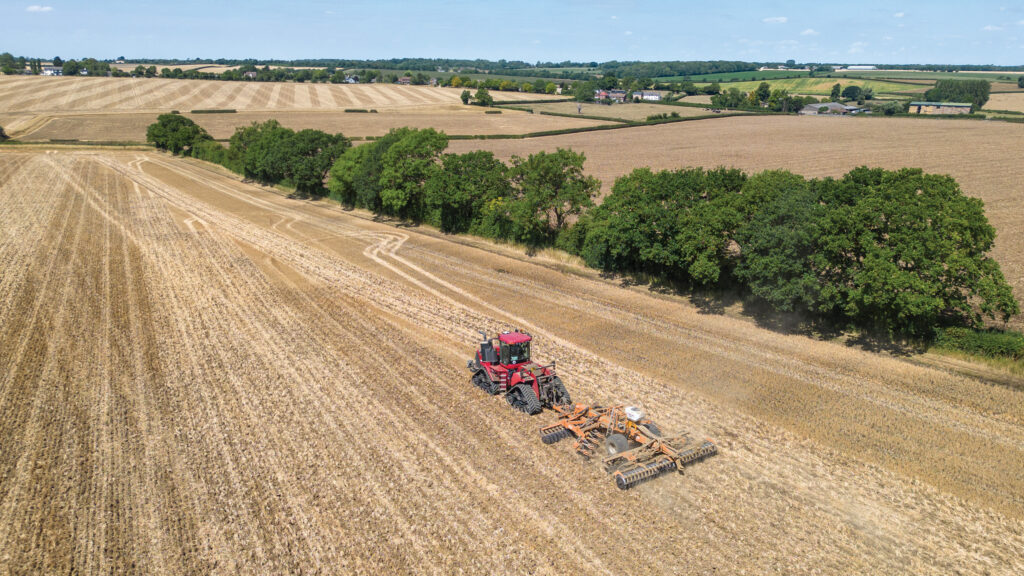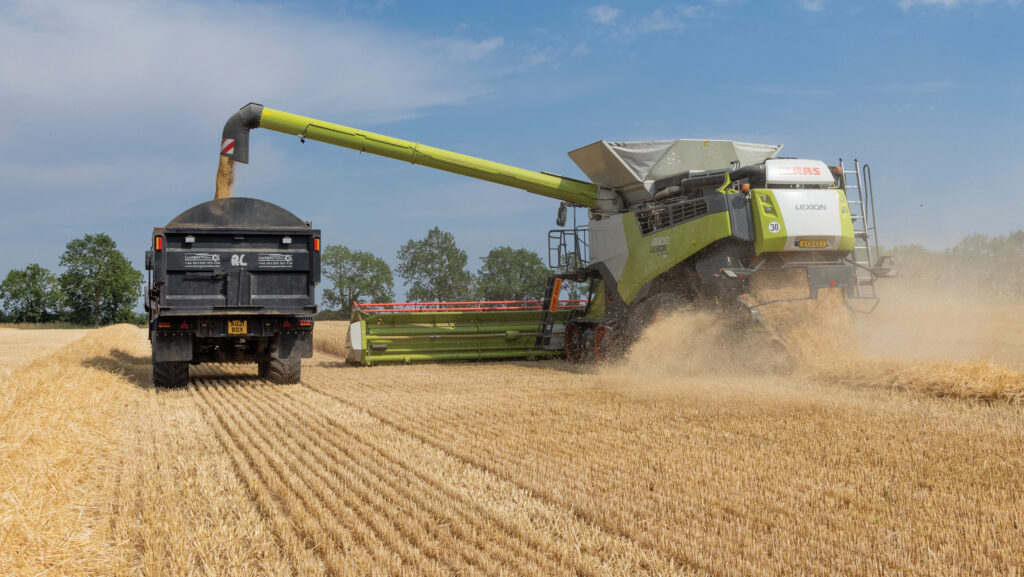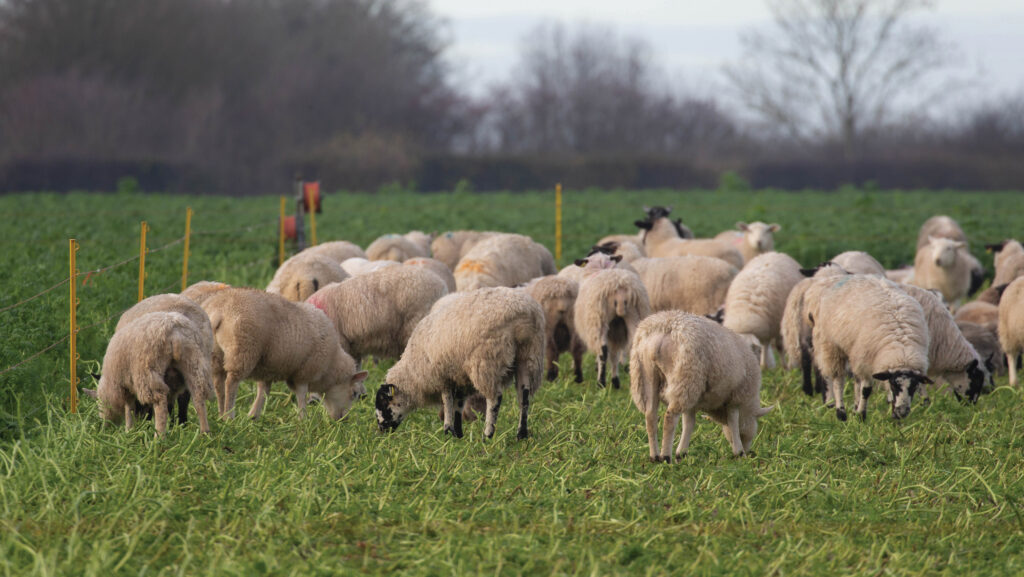Analysis: How to meet arable business challenges ahead
 © GNP
© GNP The next five years will present arable businesses with some critical decisions, whether they are in a regenerative system or not, says farm business consultant Andersons.
“There are going to be a few challenging years ahead, it’s very negative at the moment,” says Sebastian Graff-Baker, a partner in the firm. “We could see quite a rationalisation of trading businesses in the next five years.”
Speaking at Groundswell (2-3 July), he said: “It’s the most negative we’ve seen it since the early 2000s, when wheat was £60-£65/t.
“We have to recognise that for some people there is no support at all, and at this juncture that there are two categories of farm business: the ‘haves’ and the ‘have nots’.”
See also: Common farming partnership accounts errors and how to avoid them
Wheat prices are under pressure globally and despite a crop of just 11.1m tonnes in 2024, the UK carried 1.6m tonnes of stock into the new cereal year on 1 July, far higher than the five-year average.
“Whether they are regen or not, if we look at combinable cropping businesses, they are marginal at £100-£200/t for feed wheat.”
Too many businesses are still trying to produce a profit from parts of the farm that should not be cropped, says Sebastian, with cashflow further challenged by many having to fund tax bills from the bumper results of the 2022 harvest.
These circumstances will present good opportunities for top-performing businesses, with more land becoming available, alongside joint ventures and collaboration with neighbours, he suggests.
CAAV highlights challenges on many fronts
At the Central Association of Agricultural Valuers’ (CAAV) recent annual conference, secretary and adviser Jeremy Moody set farming’s challenges in a wider context.
The loss of inheritance tax (IHT) relief is just one issue, he said, alongside the global risk of climate change, weak public finances, the removal of a generation of farm support payments in England, new markets and technologies, energy and power issues and regulatory expectations.
Chief risks include those on the geopolitical front, supply chain evolution, financial shocks and pandemic potential.
Key changes are likely in who farms and how, he predicted, while on a national basis, the real need is for economic growth.
“We are about to be a third poorer than we would have been if growth continued from 2008,” he said.
UK gross domestic product (GDP – the value of goods and services produced during a given period) is now just 3.75 times the global average, when previously it was six times the global level, he highlighted.
UK GDP a head in 2024 was $49,500 compared with $82,500 for the US, and is now lower than for any US state.
Farm business tenancy rents
The outlook includes particular challenges for the tenanted sector.
“Landlords have been deaf to considering reductions in rent, but now farm business tenancy rents are under real pressure and we will possibly see them come down,” says Sebastian.
“There will be more of a focus on the landlord/tenant relationship and on contract farming.
“Some of the things that people are grappling with will be central to the future of tenanted businesses, with some critical decisions coming up.”
Regenerative approach
Climate change makes the case for converting to a regenerative system, which is about making the business more resilient, in particular in the face of the increasing volatility in temperature and rainfall, says his consultant colleague Amelia Rome.
Those planning to make a move to regen or in conversion need to keep lenders informed of their plans, especially if debt is already a challenge, advises Amelia.
“A drop in output and profit is likely and can raise red flags if the bank is not aware, however, they are keen to support sustainable, resilient businesses,” she says.
Cutting overheads when moving to a regenerative approach is a challenge, with a tendency often to retain machinery on a just-in-case basis, she warns.

© GNP
Managing lumpy costs such as labour and big kit such as combines is tricky – options include sharing or joint ventures on machinery and labour costs. “It’s easy to grow a business, but hard to cut back,” says Amelia.
“And the variation in the weather can blow plans out of the water on certain soil types and systems.
“For example, the wet autumn of 2023, followed by the wet spring of 2024, made direct-drilling impossible on some farms, so you have to have contingencies.
“The key is understanding your cost base to start with, and to not assume that things will develop in a straight line.”
There are risks in the transition to a regenerative system, but the potential reward of future resilience.
Output may recover, but in some cases yields will stabilise at lower levels, says Andersons, so the business case needs to be carefully assessed as for any investment.
Other considerations include:
- How much can fertiliser use realistically be reduced – the carbon-to-nitrogen balance needs addressing and cover crop demand accounted for
- The benefit of improved soil health doesn’t show in financial accounts in the short-term
- Preferential borrowing terms may be available for the adoption of more sustainable practices, but a detailed multi-year business plan will be needed
- Premiums and area-based contracts for regenerative produce are still at relatively small volumes, with contracts filled quickly, but there is growth potential
- Public recognition and knowledge of regen practices is poor, limiting market growth
- A new Sustainable Farming Incentive (SFI) scheme is expected to be available for summer 2026, but the options will probably not be as exciting, lucrative or as wide-ranging as previous SFI offerings
- Consider income forgone – for example, could a grain store or other building be rented out.
Carbon options
Carbon payments are available for lower emissions – a regen approach will always have lower emissions than conventional combinable cropping systems, but check the terms carefully, advises Amelia.
“If it turns out that you don’t achieve what you have sold, you may well have to find it in the market.”
Supply chain customers are seeking to “inset” carbon dioxide reductions by incentivising suppliers, but will want the benefit of those reductions for their own carbon accounting.
Regen Farm model

© Tim Scrivener
Regen Farm is a 600ha notional business created to model the fortunes of regenerative arable farming. It owns 240ha and has 360ha on farm business tenancies.
Labour includes the owner, one full-time worker and harvest casual help. The farm is on Grade 3 soil and direct-drills all crops.
Conversion began about 11 years ago and the business is now fully regenerative, with yields about 10% lower than on the firm’s similar Loam Farm conventional arable model, where the working capital requirements are similar.
Seed rates are budgeted at about 10% higher than conventional combinable cropping, all straw is chopped and there are no regen premiums on crop sales.
No insecticides are used, but herbicides are front-loaded because of the need for direct-drilling. Soil organic matter is between 3% and 8%.
As for many combinable crop businesses, harvest 2023 returns were average, after a spectacular 2022 performance.
The 2024 results were poor, with yields down due to the wet 2023 autumn and 2024 spring. Prices were also lacklustre.
Yield reductions are budgeted for harvest 2025 – despite this, the loss of most of the Basic Payment Scheme and poor prices, the budget looks better, with the farm having upgraded its Sustainable Farming Incentive scheme this year.
The prospects for harvest 2026 currently look mediocre, with a return to “normal” yields but poor forward prices.
Cropping
- 200ha feed winter wheat
- 100ha each of spring malting barley, winter oats and spring beans.
- 80ha milling winter wheat
- 20ha herbal leys (SAM3)
- Cover crops are grown ahead of the spring crops
- Third-party sheep graze the herbal leys and cover crops
Andersons’ Regen Farm model – performance and budget |
||||
|
£/ha |
Harvest 2023 (actual)
|
Harvest 2024 (actual) |
Harvest 2025 (provisional)
|
Harvest 2026 (budget)
|
|
Output |
1,718 |
1,246 |
1,334 |
1,426 |
|
Variable Costs |
754 |
510 |
503 |
501 |
|
Gross margin |
962 |
736 |
831 |
925 |
|
Overheads |
545 |
539 |
573 |
565 |
|
Rent and finance |
256 |
266 |
264 |
261 |
|
Drawings |
82 |
86 |
89 |
89 |
|
Margin from farming |
78 |
(155) |
(95) |
9 |
|
BPS and SFI* |
128+40 |
93+112 |
12+139 |
1+139 |
|
Business surplus |
246 |
50 |
56 |
149 |
|
Source: Andersons * (SFI payments shown gross, costs of compliance are in farming costs) |
||||
Values used for key variables in Regen Farm model budget |
||||
|
|
2023 |
2024 |
2025 |
2026 |
|
Feed wheat (£/t) |
198 |
188 |
155 |
185 |
|
Beans (£/t) |
236 |
225 |
220 |
220 |
|
Nitrogen (£/t) |
675 |
350 |
330 |
330 |
|
Red diesel (p/litre) |
85 |
85 |
67 |
70 |
|
Source: Andersons |
||||
